We set off for the town of Roussillon which is known for its ochre coloured houses and the Sentier des Ochres (Ochre Walk). On the way we passed by a lavender field that was almost in bloom with lots of other people pulled over to take pictures. We stopped too since it was the first field we had seen that was showing any hint of purple. We then continued up and found parking just outside of town.
We headed in past lots of houses with lovely coloured shutters. The blue shutters stood out the most against the yellows, oranges, and reds of the houses. There were some amazing smelling jasmine plants and we stopped to enjoy their scent while taking more photos. We stopped off briefly at the TI to pick up a map of town and see if they had any more interesting information on the area. Then we walked up to the old ochre quarry which had a walk with info panels along the way. We thought we'd better do that first since the day was only getting hotter and we weren’t sure about how much shade there would be.
Our first view of the ochre quarry was impressive. We were looking down on a wide bowl of yellow with stunning red/orange/pink cliffs behind them. We walked down the stairs and could immediately see why they had warned you against wearing light coloured clothing! It was incredible to see how many shades of yellows, reds, oranges and pinks were in the quarry and they looked amazing against a very blue sky.
We continued on the path which had panels explaining about the formation of ochre, what it was used for and how it was transported. We saw one really neat column that was quite high and one section had much more reds in the cliffs than in the original bowl. We later learned that ochre turns red when it is heated and exposed to air which probably explains why the cliffs were red while the area where everyone was walking was yellow. We quite enjoyed the walk and were glad that we had gone earlier in the day as it was quite hot when we left the shade.
After the walk, we strolled into the town and as we wandered through town, we looked at menus along the way. We found one that sounded tempting to all of us and headed in. Since it was just after noon, we were the first people there and had our choice of the tables on the balcony looking out over town and towards more ochre hills. We all had a salad to start which was quite tasty and boded well for the rest of the meal. For the main, Anoop and I went for the sage stuffed ravioli which came with a side salad and Mom chose the stuffed tomato and zucchini. We all really enjoyed our mains and looked forward to dessert.
Mom chose the lemon tart, I had a crème brulée and Anoop chose a nougat glacé since it was one he hadn’t seen on a menu before. It turned out to be a sort of ice cream which was nougat flavoured and had chunks of pistachio and served in a nougat-like slice with a raspberry coulis. All of the courses were delicious and we thought we’d picked a good restaurant for a touristy town. A few days later when Anoop was browsing through our guide book again he saw that the restaurant was actually the only one recommended for there.
After lunch we continued uphill to the viewpoint, stopping along the way at a couple of art galleries and shops to check things out. The viewpoint was great and we could look out over the vineyards below and even see Mont Ventoux in the background. We continued perusing shops and Mom picked up a neat bowl and mug each for her and James with a picture of a goat and donkey on them.
Having done some shopping and not wanting to carry it off to the old ochre processing centre, Anoop volunteered to run the bags back to the car while Mom and I started off. We hadn’t made it far by the time he came back since we’d popped into a few more shops on the way and stopped for more photos. We headed downhill to the centre which was supposed to be 15 minutes away. It was a long 15 minutes since there was hardly any shade, but we made it. We arrived in time to join the guided tour which was supposed to take 50 minutes. We thought that might be more interesting than just reading about it and after a quick discussion, decided to join them. We soon realized that we should have just gone on our own. The guide was quite interested in sharing his knowledge about how the ochre was processed, but his voice was so monotonous that it was hard to actually pay attention to him.
Also, he took forever to describe each area and what was supposed to be a 50 minute tour took more than 2 hours! We were all pondering ways to slip away, but we couldn’t think about how to do it without being rude since it was such a small group. So we continued on the tour which was actually quite interesting, just not presented interestingly. We started off in a room where they had all the old pigments which would have been mixed to make paint. On the other side of the room were all the pre-mixed paints which had eventually come along, replacing the raw pigments. There were old stencils of company names, colours and also destinations where they were to be shipped (including Surabaya – spelled Soerabaya back then – which is the city Anoop used to live in in Indonesia). We then went outside to see the oven where they baked the ochre until it turned red. The guide said that they could tell when it was done because the smell changed. We then headed over to the ochre washing area which was done in several steps. First the sand, ochre and water were mixed together before being let out into a long channel. Then they would quickly stop the flow of water in a simulated wave movement to separate the ochre from the sand. The heavier sand would sink to the bottom while the lighter ochre remained suspended in the water. The water would be drained away slowly by removing the pegs one at a time (from board at the end of the channel holding the mixture) as the sand settled out. As our guide asked us, how does one tell if all the sand has settled out? They simply tasted the water because as our guide told us, if there’s even a grain of sand, you were bound to feel it.
The water and ochre then head into the basins where it sits. The ochre settles at the bottom and the clear water is drained the following morning using the same system of multiple plugs, starting at the top. This takes place in the fall and the winter and the water is recuperated so that it can be used again. In the spring, the basins are filled with ochre and they are cut into squares. In the summer, the squares are removed from the basin and left to dry in the sun. We then headed over to the milling area where the ochre would be crushed, grinded and sifted. To keep the colours separate, there were several mills in the production area. The diagrams of the process really helped to understand how it all worked. The ochre passed through a series of filters until only the finest powder remained; the powder that was too coarse was sent back to repeat the process. The dust would have been awful and everything was yellow in the yellow processing area and red in the red mills. We learned that the workers had been told that ochre was not harmful like coal dust was and so they didn’t wear masks or anything. Unfortunately, most of them developed silicosis because they inhaled so much of it. It was quite interesting seeing all the old equipment and learning about a process that I had never really given any thought to before.
We then returned uphill, slogging along in the heat and looking forward to the AC once we got back to the van. Once back in town, Mom treated us to an ice cream to cool down and we then returned to the car. We returned to camp for a bit later of a dinner since we hadn’t expected to be at the quarry for such a long time.
Ochre Quarry in Roussillon
Saturday, June 22, 2013
 Roussillon, Provence-Alpes-Côte d'Azur, France
Roussillon, Provence-Alpes-Côte d'Azur, France
Other Entries
-
143Beautiful views near Camaret
May 2231 days prior Camaret-sur-Mer, Francephoto_camera42videocam 0comment 0
Camaret-sur-Mer, Francephoto_camera42videocam 0comment 0 -
144Crepes in Locronan
May 2330 days prior Locronan, Francephoto_camera20videocam 0comment 0
Locronan, Francephoto_camera20videocam 0comment 0 -
145Quimper
May 2429 days prior Quimper, Francephoto_camera22videocam 0comment 0
Quimper, Francephoto_camera22videocam 0comment 0 -
146Artist Village of Pont Aven
May 2528 days prior Pont-Aven, Francephoto_camera8videocam 0comment 0
Pont-Aven, Francephoto_camera8videocam 0comment 0 -
147A relaxing day in Quiberon
May 2627 days prior Quiberon, Francephoto_camera15videocam 0comment 0
Quiberon, Francephoto_camera15videocam 0comment 0 -
148Megaliths and Thundershowers
May 2825 days prior Vannes, Francephoto_camera35videocam 0comment 0
Vannes, Francephoto_camera35videocam 0comment 0 -
149Marais Poitevin
Jun 0121 days prior Saint-Hilaire-la-Palud, Francephoto_camera45videocam 1comment 0
Saint-Hilaire-la-Palud, Francephoto_camera45videocam 1comment 0 -
150Ile de Ré
Jun 0319 days prior Saint-Martin-de-Ré, Francephoto_camera45videocam 0comment 0
Saint-Martin-de-Ré, Francephoto_camera45videocam 0comment 0 -
151Exploring around Royan
Jun 0616 days prior Royan, Francephoto_camera97videocam 0comment 0
Royan, Francephoto_camera97videocam 0comment 0 -
152Sarlat Market, a third visit
Jun 0814 days prior Sarlat-la-Canéda, Francephoto_camera50videocam 0comment 0
Sarlat-la-Canéda, Francephoto_camera50videocam 0comment 0 -
153Saint-Cirq-Lapopie and the Cuzals farm museum
Jun 0913 days prior Saint-Cirq-Lapopie, Francephoto_camera93videocam 3comment 0
Saint-Cirq-Lapopie, Francephoto_camera93videocam 3comment 0 -
154Millau Viaduct and the Roquefort Caves
Jun 1012 days prior Millau, Francephoto_camera37videocam 0comment 0
Millau, Francephoto_camera37videocam 0comment 0 -
155Scenic Drives, Views and Caves near Meyrueis
Jun 148 days prior Meyrueis, Francephoto_camera164videocam 3comment 0
Meyrueis, Francephoto_camera164videocam 3comment 0 -
156Commuting to the Camargue
Jun 166 days prior Saliers par Arles, Francephoto_camera85videocam 0comment 2
Saliers par Arles, Francephoto_camera85videocam 0comment 2 -
157Exploring the Chateau in Les Baux
Jun 175 days prior Les Baux de Provence, Francephoto_camera55videocam 0comment 1
Les Baux de Provence, Francephoto_camera55videocam 0comment 1 -
158Perched Village of Gordes
Jun 202 days prior Gordes, Francephoto_camera45videocam 0comment 0
Gordes, Francephoto_camera45videocam 0comment 0 -
159Great Market, Incredible Ice Cream & Amazing Views
Jun 211 day prior Lourmarin, Francephoto_camera42videocam 0comment 0
Lourmarin, Francephoto_camera42videocam 0comment 0 -
160Ochre Quarry in Roussillon
Jun 22 Roussillon, Francephoto_camera77videocam 0comment 0
Roussillon, Francephoto_camera77videocam 0comment 0 -
161Sunday Market and Waterwheels
Jun 231 day later L'Isle-sur-la-Sorgue, Francephoto_camera36videocam 0comment 0
L'Isle-sur-la-Sorgue, Francephoto_camera36videocam 0comment 0 -
162Fontaine de Vaucluse
Jun 242 days later Fontaine de Vaucluse, Francephoto_camera52videocam 1comment 0
Fontaine de Vaucluse, Francephoto_camera52videocam 1comment 0 -
163Village des Bories, Menerbes and Lacoste
Jun 253 days later Menerbes, Francephoto_camera51videocam 0comment 0
Menerbes, Francephoto_camera51videocam 0comment 0 -
164Sault, Gorge de la Nesque & Mont Ventoux
Jun 264 days later Sault, Francephoto_camera42videocam 0comment 0
Sault, Francephoto_camera42videocam 0comment 0 -
165Seguret
Jun 275 days later Seguret, Francephoto_camera24videocam 0comment 0
Seguret, Francephoto_camera24videocam 0comment 0 -
166Venasque & a Return to Isle sur Sorgue
Jun 286 days later L'Isle-sur-la-Sorgue, Francephoto_camera37videocam 0comment 0
L'Isle-sur-la-Sorgue, Francephoto_camera37videocam 0comment 0 -
167Pernes-les-Fontaines
Jun 297 days later Pernes-les-Fontaines, Francephoto_camera29videocam 1comment 3
Pernes-les-Fontaines, Francephoto_camera29videocam 1comment 3 -
168The Tour de France speeds by
Jul 0412 days later Maussane-les-Alpilles, Francephoto_camera33videocam 1comment 0
Maussane-les-Alpilles, Francephoto_camera33videocam 1comment 0 -
169Hiking in the Alpilles
Jul 0513 days later Maussane-les-Alpilles, Francephoto_camera17videocam 0comment 0
Maussane-les-Alpilles, Francephoto_camera17videocam 0comment 0 -
170Colorado Provencal
Jul 0715 days later Rustrel, Francephoto_camera28videocam 0comment 4
Rustrel, Francephoto_camera28videocam 0comment 4 -
171Abbaye de Valsaintes & Simiane-la-Rotonde
Jul 0816 days later Simiane-la-Rotonde, Francephoto_camera57videocam 0comment 0
Simiane-la-Rotonde, Francephoto_camera57videocam 0comment 0 -
172Exploring the Verdon Gorge
Jul 1220 days later Moustiers Sainte-Marie, Francephoto_camera97videocam 1comment 0
Moustiers Sainte-Marie, Francephoto_camera97videocam 1comment 0 -
173Lavender on the Valensole Plateau
Jul 1321 days later Valensole, Francephoto_camera48videocam 1comment 0
Valensole, Francephoto_camera48videocam 1comment 0 -
174Forcalquier
Jul 1624 days later Forcalquier, Francephoto_camera69videocam 1comment 0
Forcalquier, Francephoto_camera69videocam 1comment 0 -
175Hot Air Ballooning and the Bastide St. Georges
Jul 1826 days later Forcalquier, Francephoto_camera119videocam 6comment 0
Forcalquier, Francephoto_camera119videocam 6comment 0 -
176Les Aventurières du Goût Cooking Adventures
Jul 2028 days later Brantes, Francephoto_camera87videocam 0comment 0
Brantes, Francephoto_camera87videocam 0comment 0 -
177Lavender fields around Sault
Jul 2129 days later Sault, Francephoto_camera71videocam 1comment 0
Sault, Francephoto_camera71videocam 1comment 0 -
178Market Day in Vaison-la-Romaine
Jul 2331 days later Vaison-la-Romaine, Francephoto_camera30videocam 0comment 0
Vaison-la-Romaine, Francephoto_camera30videocam 0comment 0

 Roussillon, Provence-Alpes-Côte d'Azur, France
Roussillon, Provence-Alpes-Côte d'Azur, France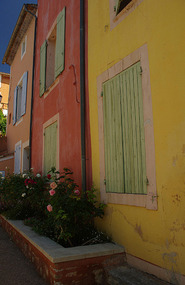
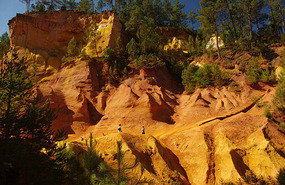
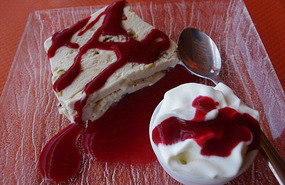
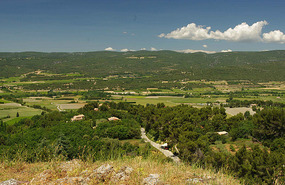

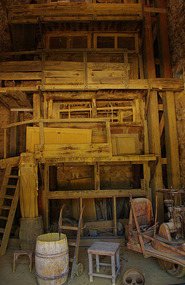








































































2025-05-22